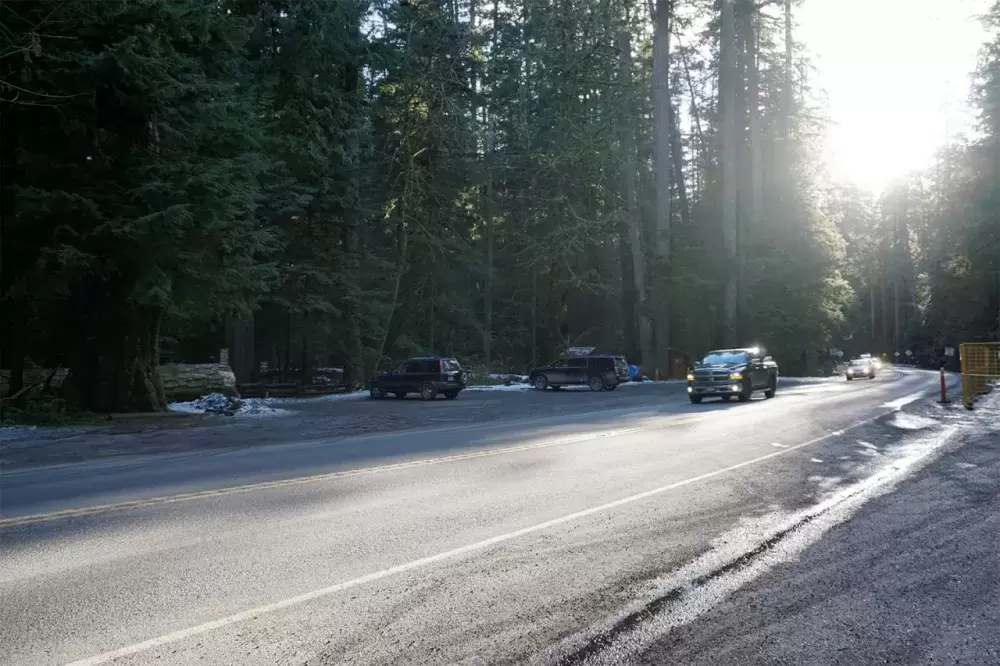More than 500 people submitted ideas on improving safety and access to Cathedral Grove, while protecting environmental, social and cultural values.
The Ministry of Transportation and Infrastructure (MoTI), who held open houses in Parksville and Port Alberni in November and had an online engagement period open until early January, will now take these ideas into the next phase of the Cathedral Grove Pedestrian and Traffic Safety Study, which will include designing preliminary concepts to address pedestrian, traffic and safety issues.
“Our next steps here are to come back to the public this spring (date to be determined) and basically reflect those ideas that we heard, develop those ideas into a few concepts and then look for some more feedback from the public,” said MoTI district manager for Vancouver Island Mike Pearson.
Cathedral Grove, located in MacMillan Provincial Park, at the edge of Nuu-chah-nulth territory, has become a local, national and international attraction, with roughly 500,000 visitors per year.
The Cathedral Grove Pedestrian and Traffic Safety Study is designed to work collectively with park visitors, Indigenous communities, law enforcement and governing partners to find solutions to ongoing safety and traffic concerns surrounding parking and pedestrian movements along Highway 4.
Pearson said MoTI has reached out to six First Nations groups—Tseshaht, Hupacasath, Nanoose, K’omoks, Qualicum and Nanwakolas—looking for their specific input.
“We had some [First Nation representatives] show up at the open houses and we’re going to continue [seeking feedback] going into this next round,” Pearson said. “First Nations are our specific stakeholders so we’re looking for their direct input and any way we get that, through direct meetings with them or through the next round of open houses, we’re happy to receive it.”
Through the first phase of public input, Pearson said, some common feedback MoTI received from First Nations groups included ideas of adding a pedestrian overpass or underpass, ideas for a highway bypass around the park through the Horne Lake connector and relocating the parking lot.
“Really what we heard loud and clear from everyone was there’s definitely a need to improve pedestrian and vehicle safety while protecting the value of the park and not impacting the park,” Pearson said.
During summer days, thousands of vehicles travel through Cathedral Grove, with approximately 530 pedestrians crossing Highway 4 every two hours, according to B.C. government stats.
Of the 488 respondents who completed a MoTI questionnaire, 155 (from a pedestrian perspective) said it was difficult or scary to cross the road and/or walk along Highway 4 to the park, 30 said they chose to visit only one side of the park to avoid crossing the highway and 30 said they had concerns about erratic pedestrian behaviour, such as walking into moving traffic, crossing when unsafe or expecting traffic to stop.
From a driver’s perspective, 122 respondents said they had concerns about the high activity in the area in the summer, moderate concerns about activity in the spring and fall and perceptions that the busy season is expanding. There were also 112 mentions of frustrations and concerns about the unpredictability of park visitors, both pedestrians and motorists, entering the highway unexpectedly. Thirty-one respondents said they had concerns about parking encroaching into highway lanes and 26 said they worry that not all motorists slow to the speed limit when traveling though the park.
Protection of rare old-growth trees was also one of the most frequently heard comments from the public.
The concepts will be presented during the next phase of public engagement, planned for spring 2019. Details about future open houses and further engagement opportunities will be made available by the ministry in the near future.







